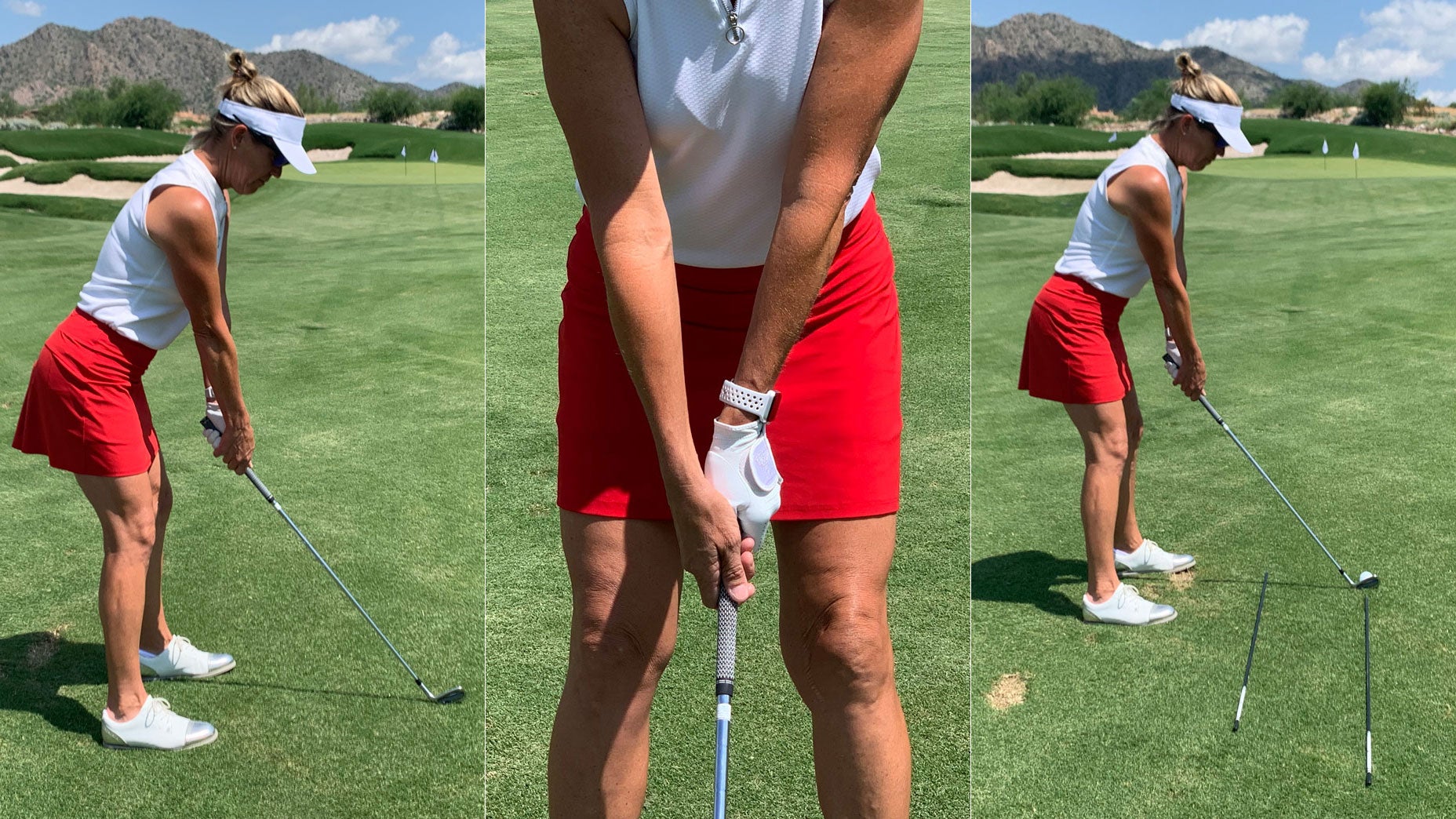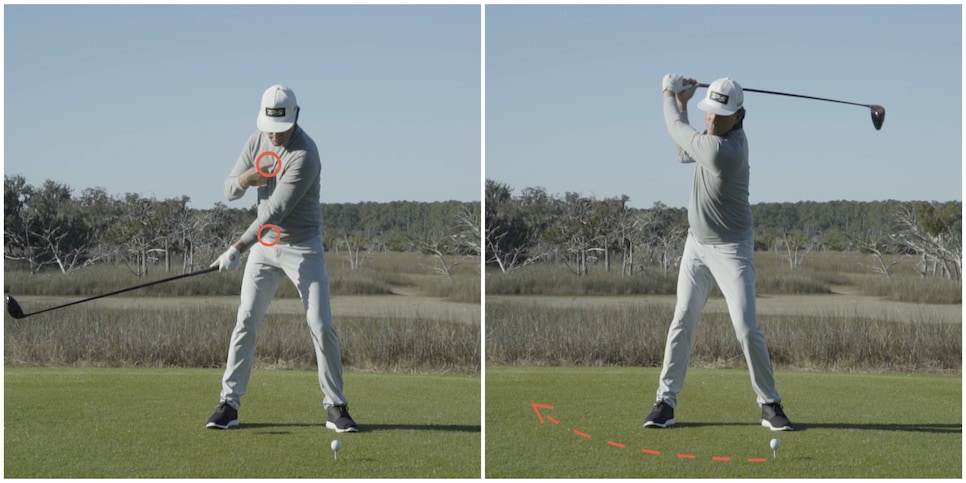Golf is one of those sports that looks simple when watching the professionals, yet feels incredibly difficult the first time you pick up a club. From grip and stance to body rotation and follow-through, every part of the swing requires attention. For beginners, mastering the swing basics is the single most important step toward consistent performance and long-term enjoyment of the game.
In this article, we will cover 7 essential beginner golf tips swing basics that set the foundation for better play. We’ll also explore special considerations like beginner golf swing tips for women, insights into the best beginner golf swing tips, and why practicing with a slow motion golf swing for beginners can drastically improve muscle memory.
Whether you’re stepping onto the driving range for the first time or just looking to refine your form, these fundamentals will help you build confidence and consistency.
1. The Grip: The Foundation of Every Golf Swing

The grip is the very first element of the golf swing, and arguably the most important. Without the correct grip, even the most powerful swing will send the ball off course.
Key Grip Basics for Beginners
- Neutral Grip: Place your left hand (for right-handed players) on the club so that the thumb points slightly to the right of center. The "V" formed between thumb and index finger should point toward your right shoulder.
- Right Hand Placement: Rest your right hand just below your left, wrapping your fingers comfortably. The thumb of your right hand should fit naturally over the left thumb.
- Grip Pressure: Squeeze the club as if you are holding a tube of toothpaste—you don’t want to crush it, but you don’t want it slipping out either.
Common Mistakes
- Too tight: Causes tension in arms and shoulders.
- Too weak: Leads to slicing the ball.
A strong, neutral grip ensures the clubface stays square at impact—one of the best beginner golf swing tips to prevent frustration early on.
2. Stance and Posture: Building Balance and Power

A golfer’s stance sets the stage for balance, stability, and proper swing mechanics. Beginners often overlook this because it feels “too simple,” but incorrect posture can ruin an otherwise solid swing.
Stance Basics
- Feet: Shoulder-width apart for irons, slightly wider for drivers.
- Knees: Slightly flexed—not locked.
- Spine Tilt: Bend at the hips, not the waist, keeping the spine straight.
- Arms: Hang naturally, with a slight bend at the elbows.
Beginner Golf Swing Tips for Women
Women often benefit from paying closer attention to stance width. A slightly narrower stance can provide better balance and allow smoother hip rotation, especially for those with shorter clubs or different body mechanics.
Proper stance gives you the stability to generate power while maintaining control—crucial for consistent ball striking.
3. The Backswing: Setting Up for Power

The backswing is all about creating the right position at the top of the swing without over-rotating. Beginners sometimes swing back too far, leading to loss of balance.
Backswing Fundamentals
- Low and Slow: Begin the takeaway with the clubhead moving low to the ground.
- Shoulder Turn: Rotate your shoulders until your left shoulder is under your chin.
- Hips: Allow them to rotate naturally, but don’t force it.
- Wrists: Hinge naturally, not excessively.
Slow Motion Golf Swing for Beginners
Practicing your backswing in slow motion helps you understand the sequence of movements. By exaggerating the feeling of a proper shoulder turn and wrist hinge, you build muscle memory that translates into real-time swings.
4. The Downswing: Delivering Energy to the Ball

The downswing is where energy is transferred from your body to the club and ultimately to the ball. For beginners, the challenge is avoiding the urge to hit too hard.
Downswing Steps
-
Start from the Ground Up: Shift weight from your back foot to your front foot.
-
Hips First: Rotate your hips toward the target before your arms follow.
-
Maintain Lag: Keep the club angled until just before impact for maximum power.
-
Square the Clubface: Ensure the clubface is square to the ball at impact.
Common Mistakes
- Over-the-top swing: Starting with arms instead of hips, causing slices.
- Rushing: Trying to hit too hard without proper sequence.
One of the best beginner golf swing tips here is to focus on rhythm, not brute force. Smooth, well-sequenced downswings create better shots than rushed, powerful ones.
5. Impact: The Moment of Truth
Impact is where everything comes together. A proper grip, stance, backswing, and downswing should all lead to a square, centered strike.
Impact Keys
- Hands Ahead: At impact, your hands should be slightly ahead of the ball.
- Firm Left Side: For right-handed players, the left leg should remain firm but not locked.
- Ball Position: Adjust depending on the club—forward for drivers, center for short irons.
Impact is also where beginners often experience mishits—topping the ball, hitting behind it, or slicing. Practicing with alignment sticks or impact tape can help you see exactly where your clubface meets the ball.
6. Follow-Through: Finishing Strong
Many beginners stop their swing after impact, but the follow-through is crucial for balance and accuracy.
Follow-Through Basics
- Chest Toward Target: Your torso should face the target at the end of the swing.
- Balanced Finish: Weight should be fully on your front foot, back foot balanced on the toe.
- High Hands: The club should finish high, around your shoulders or behind your head.
Practicing the follow-through in slow motion golf swing for beginners helps ensure you’re not quitting early but completing the full motion.
7. Practice Strategies: Building Muscle Memory
Improvement in golf requires consistent, structured practice. Randomly hitting balls at the range will not build the fundamentals.
Drills for Beginners
- Slow-Motion Swings: Perfect for ingraining correct movement patterns.
- Half-Swing Drill: Focuses on control and rhythm.
- Alignment Drill: Use clubs or sticks on the ground to ensure proper aim.
Mental Approach
- Focus on progress, not perfection.
- Keep a journal of practice sessions.
- Celebrate small victories—like hitting three solid shots in a row.
Beginner Golf Swing Tips for Women
For women starting out, lighter clubs and slightly modified drills can help build confidence. Many women also benefit from focusing on flexibility and core strength, which support a smoother swing motion.
Additional Considerations for Beginners
Equipment Matters
Using the right clubs is essential. Beginners should start with cavity-back irons, hybrids instead of long irons, and a forgiving driver with a larger clubhead.
Lessons vs. Self-Practice
Professional lessons accelerate learning by correcting mistakes early. However, self-practice with structured drills can still yield solid improvement if lessons aren’t accessible.
Patience Is Key
Golf improvement is measured in months and years, not days. Consistency is more important than intensity.
Conclusion: Mastering the Basics for a Lifetime of Enjoyment
Learning golf as a beginner can feel overwhelming, but focusing on beginner golf tips swing basics makes the process manageable. From grip and stance to impact and follow-through, every small adjustment adds up to better performance.
By applying the best beginner golf swing tips, incorporating a slow motion golf swing for beginners, and acknowledging unique considerations such as beginner golf swing tips for women, new players can build a strong foundation for long-term success.
Golf is not just about hitting the ball—it’s about rhythm, control, and consistency. With dedication and the right fundamentals, any beginner can transform frustration into confidence on the course.






.jpg)
.jpg)







